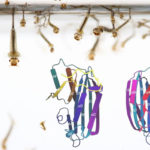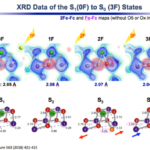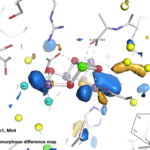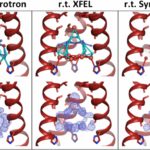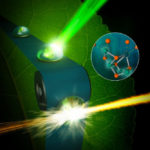Many of the chemicals used to deter or eliminate disease-carrying mosquitoes can pollute ecosystems and drive the evolution of even more problematic, insecticide-resistant species – but thankfully, we may have better options soon.
Superfacility Framework Advances Photosynthesis Research
An article published in the Computing Sciences News Center describes how Biosciences researchers are using a superfacility framework of experimental instrumentation with computational and data facilities to unravel the long-standing mystery of how Photosystem (PSII) works. The protein complex plays a crucial role in photosynthesis, making it key to achieving artificial photosynthesis that could produce fuels using sunlight and carbon dioxide. Researchers—led by Vittal Yachandra, Junko Yano, and Jan Kern in Molecular Biophysics and Integrated Bioimaging (MBIB)—recently began using ESnet to enable real-time processing of experimental data collected at the SLAC National Accelerator Laboratory’s Linac Coherent Light Source (LCLS) at NERSC to observe this water-splitting protein in action. Asmit Bhowmick, a postdoctoral researcher in the laboratory of MBIB senior scientist Nicholas Sauter, is quoted in the article.
Scientists Capture Photosynthesis in Unprecedented Detail
Using the SLAC National Accelerator Laboratory’s Linac Coherent Light Source (LCLS) X-ray laser, an international collaboration led by scientists at Berkeley Lab and SLAC captured the all four stable oxidation states of photosystem II— plus two transitional states—at natural temperature and the highest resolution to date.
Room Temperature XFEL Provides Clearest View Yet of Water Networks in Influenza M2 Proton Channel
Molecular Biophysics & Integrated Bioimaging (MBIB) Division scientists Aaron Brewster, Nicholas Sauter, and James Fraser were part of an international team led by William DeGrado at UCSF that used an X-ray free-electron laser (XFEL) source to visualize the arrangement of water molecules inside the influenza matrix 2 (M2) channel at room temperature. The M2 channel of influenza A is essential for the reproduction of the flu virus, making it a target for therapeutics, and it is also a model system for studying how protons are transported across a membrane bilayer. The XFEL method overcomes the limitations of previous crystallographic structures obtained using synchrotron radiation with cryocooling. While cryocooling helps to preserve crystals against rapid radiation damage, it imparts an artificially higher degree of order of the water molecules than structures obtained near room temperature. By using room temperature XFEL to study the M2 channel at various pH conditions, the researchers have gained a more accurate picture of the behavior of water molecules and their role in proton transport in these channels. The study was published in the Proceedings of the National Academy of Sciences.
X-rays Capture Unprecedented Images of Photosynthesis in Action
An international team of scientists is getting closer to discovering how plants split water during photosynthesis and produce nearly all of the oxygen in our atmosphere. Thanks to unprecedented, atomic-scale images of a protein complex found in plants, algae, and cyanobacteria captured by ultrafast X-ray lasers, researchers conducted atomic-level experiments to help delineate the mechanism of this system that also yields the protons and electrons used to reduce carbon dioxide to carbohydrates later in the photosynthesis cycle. The effort to uncover the secrets of this protein complex, photosystem II, was led by Vittal Yachandra and Junko Yano in the Molecular Biophysics & Integrated Bioimaging (MBIB) Division and the team’s findings were published this week in Nature.
Was this page useful?


